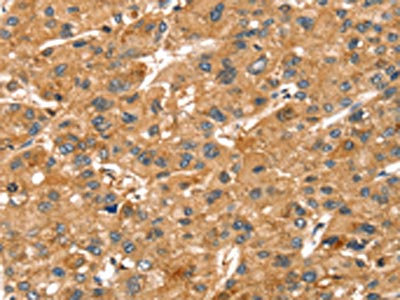alpha Fodrin antibody [D8B7]
GTX11755
ApplicationsImmunoFluorescence, Western Blot, ELISA, ImmunoCytoChemistry, ImmunoHistoChemistry, ImmunoHistoChemistry Frozen
Product group Antibodies
TargetSPTAN1
Overview
- SupplierGeneTex
- Product Namealpha Fodrin antibody [D8B7]
- Delivery Days Customer9
- Application Supplier NoteELISA: Use at a dilution of 1/10^5-1/10^6IF: Use at a dilution of 1/100 - 1/500. IHC-Fr: Use at a dilution of 1/50 - 1/100. WB: Use at a dilution of 1/10^2-1/10^3. Predicted molecular weight: 297 kDa. Optimal dilutions/concentrations should be determined by the end user.
- ApplicationsImmunoFluorescence, Western Blot, ELISA, ImmunoCytoChemistry, ImmunoHistoChemistry, ImmunoHistoChemistry Frozen
- CertificationResearch Use Only
- ClonalityMonoclonal
- Clone IDD8B7
- ConjugateUnconjugated
- Gene ID6709
- Target nameSPTAN1
- Target descriptionspectrin alpha, non-erythrocytic 1
- Target synonymsalpha-fodrin; alpha-II spectrin; DEE5; EIEE5; epididymis secretory sperm binding protein; fodrin alpha chain; NEAS; spectrin alpha chain, non-erythrocytic 1; spectrin, non-erythroid alpha chain; spectrin, non-erythroid alpha subunit; SPTA2
- HostMouse
- IsotypeIgG2b
- Protein IDQ13813
- Protein NameSpectrin alpha chain, non-erythrocytic 1
- Scientific DescriptionSpectrins are a family of filamentous cytoskeletal proteins that function as essential scaffold proteins that stabilize the plasma membrane and organize intracellular organelles. Spectrins are composed of alpha and beta dimers that associate to form tetramers linked in a head-to-head arrangement. This gene encodes an alpha spectrin that is specifically expressed in nonerythrocytic cells. The encoded protein has been implicated in other cellular functions including DNA repair and cell cycle regulation. Mutations in this gene are the cause of early infantile epileptic encephalopathy-5. Alternate splicing results in multiple transcript variants.[provided by RefSeq, Sep 2010]
- Storage Instruction-20°C or -80°C,2°C to 8°C
- UNSPSC12352203





